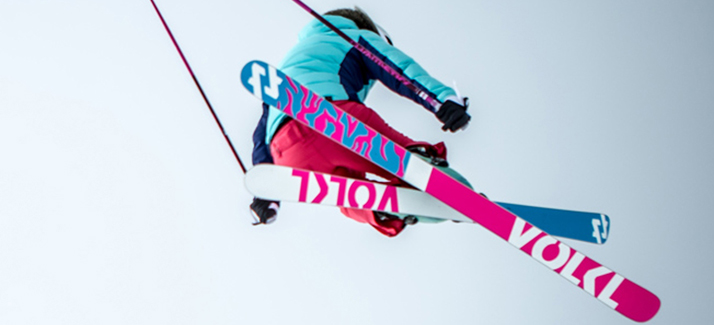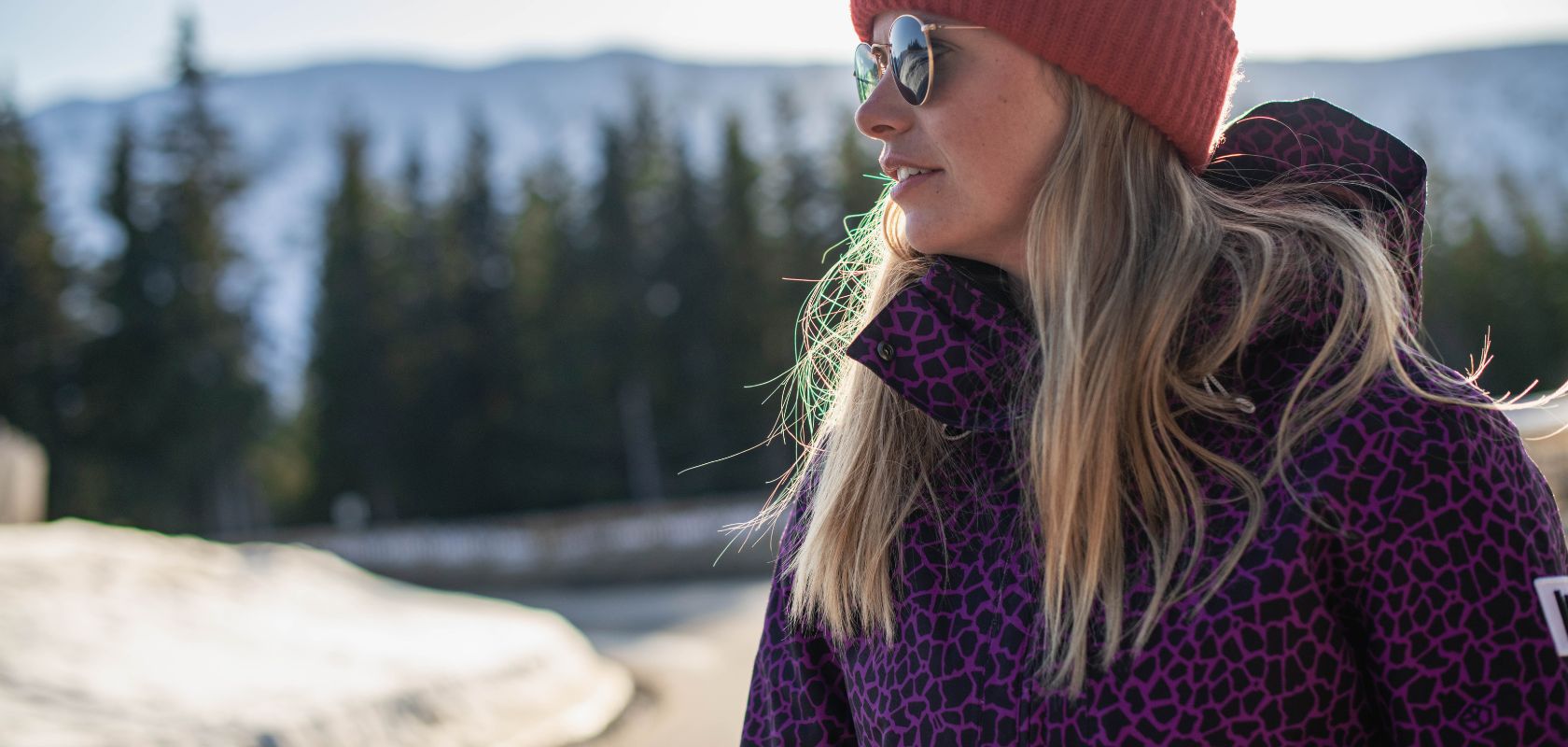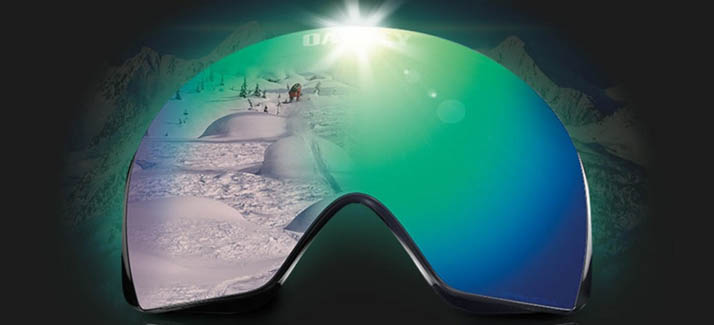BASE LAYER BUYING GUIDE
Layers are undisputably the best way to keep warm on the slopes, and this all starts with nailing the basics. Your base layer is there to manage moisture, so should effectively move sweat away from your body and keep you dry from the inside. But remember, layering systems are as individual as your ski boots or favourite runs. What works for someone else may not work for you - and that's where we come in. We've created this guide to everything there is to know about base layers, so you can choose the right one for you.

Material
Merino
Merino wool is a standout material for base layers, especially for those spending long days in the mountains. Its fine fibres make it exceptionally soft, allowing for excellent freedom of movement and a comfortable feel against the skin.
One of the biggest advantages of merino wool is its natural antibacterial and antimicrobial properties. Thanks to the lanolin and keratin wax produced by merino sheep, these base layers can be worn for several days without developing odours or needing frequent washing.
Additional benefits of merino wool base layers include:
- Excellent heat retention: Keeps you warm even in cold conditions.
- Breathability: Allows sweat vapour to escape, helping you stay dry during intense activity.
- Odour resistance: Can be worn for multiple days without smelling.
- Softness: Fine fibres prevent itching and irritation, making them comfortable for all-day wear.
Merino wool’s unique combination of warmth, breathability, and odour resistance makes it an ideal choice for anyone looking to stay comfortable and dry while working hard on the mountains.
Synthetic
Synthetic base layers are typically made from polyester or polyester blends. These materials are popular for their technical performance and are especially valued by active mountain-goers.
Synthetic options excel in several key areas:
- Breathability: They allow air to circulate, helping to regulate your body temperature during activity.
- Moisture-wicking: Synthetics efficiently pull sweat away from your skin, keeping you dry even during intense sessions.
- Quick-drying: These fabrics dry much faster than natural fibres, reducing the discomfort of lingering sweat.
However, it’s important to note that synthetic base layers generally aren’t as warm as merino wool. They focus more on moisture management and quick drying than on heat retention.
No matter which material you choose, look for ventilation features in your base layer. Options like a quarter zip or mesh panels under the arms or along the spine can:
- Improve airflow
- Help release excess heat
- Keep your temperature consistent when transitioning between high activity and rest (like waiting for the lift)
Choosing the right synthetic base layer with good ventilation will help you stay comfortable, dry, and ready for anything the mountain throws your way.

Fit
A well-fitting base layer is essential for effective temperature regulation and moisture management on the mountain. Your base layer should be close-fitting to trap body heat and wick away sweat efficiently.
Tops
- A base layer top should cover all exposed areas for maximum warmth.
- You should be able to tuck it into your outer layers to prevent cold air from getting in.
- Choose your usual t-shirt size—the fit will be snug by design to optimise performance.
Bottoms
- Like tops, bottom base layers should be close-fitting for better insulation.
- They should reach the bottom of your lower leg and rest comfortably around your ankle.
- Select your usual size for a fit that’s designed to sit next to the skin and keep you warm.
A snug fit in both tops and bottoms ensures your base layer works as intended, keeping you comfortable and dry throughout your day on the slopes.

Your Layering System
Layering is the most effective way to stay warm and comfortable on the slopes. Rather than relying on a single thick jacket, using multiple layers traps air between each layer, providing better insulation and flexibility.
A basic layering system consists of three essential components:
- Base layer: Worn next to your skin, this layer manages moisture by wicking sweat away to keep you dry.
- Mid-layer: Provides insulation by trapping body heat, helping you stay warm in cold conditions.
- Outer layer: Acts as your shield against wind, snow, and rain, keeping the elements out while allowing moisture to escape.
Each layer plays a crucial role, and getting the right combination is just as important as the individual pieces themselves. For more detailed advice, check out our mid-layer buying guide and ski jacket buying guide.
Base Layers FAQs
A base layer is the first layer of clothing worn against your skin. Its main job is to wick moisture away and regulate body temperature, keeping you dry and comfortable during active days on the slopes. Effective base layers help prevent chills and overheating, making them essential for any layering system.
The main materials are merino wool and synthetic fabrics. Merino wool offers excellent warmth, breathability, and natural odour resistance, making it ideal for variable conditions. Synthetic base layers, like polyester, are durable, quick-drying, and great for high-intensity activity. Both materials efficiently wick sweat, but merino is warmer and softer against the skin.
A base layer should fit snugly to trap heat and wick moisture effectively, but not so tight that it restricts movement. Tops should cover your torso and tuck into outer layers, while bottoms should reach your ankles for full coverage. Choose your usual t-shirt or trouser size for the best fit.
Choose the weight based on activity level and weather. Lightweight base layers are best for high-intensity activity or milder days, midweight for most winter conditions, and heavyweight for extreme cold or low-exertion days. Layering different weights can help you adapt to changing mountain conditions.
Yes, women’s base layers often have tailored fits and strategic insulation for specific thermal needs, while kids’ base layers prioritise comfort, softness, and durability. Unisex options are also available for versatile sizing and fit preferences.
Related Articles

Let us know you agree to cookies
We use marketing, analytical and functional cookies as well as similar technologies to give you the best experience. Third parties, including social media platforms, often place tracking cookies on our site to show you personalised adverts outside of our website.
We store your cookie preferences for two years and you can edit your preferences via ‘manage cookies’ or through the cookie policy at the bottom of every page. For more information, please see our cookie policy.




